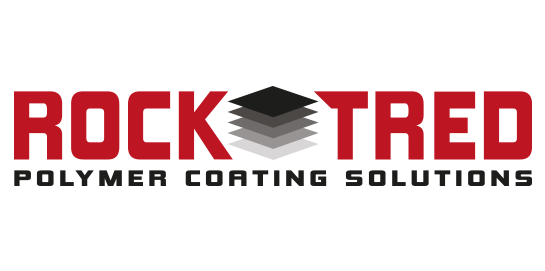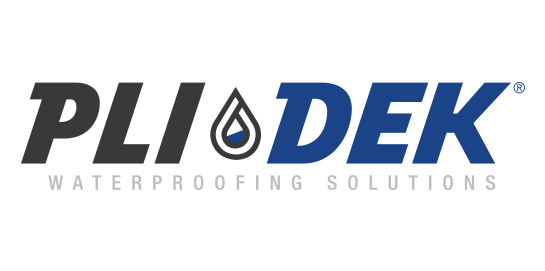

Typical Uses of Sandstone:
Outdoor:
 Patios and other outdoor areas: Sandstone’s range of colours and textures make it a popular choice of paving for pool surrounds and courtyards patios. The stone is very workable which means the design of outdoor surfaces is nearly endless.
Patios and other outdoor areas: Sandstone’s range of colours and textures make it a popular choice of paving for pool surrounds and courtyards patios. The stone is very workable which means the design of outdoor surfaces is nearly endless.
Walls: Sandstone is often used for exterior walls such as cladding, ledgestone and blockwork for homes and commercial buildings. It is a desired stone for outdoors as its unique texture and distinct colors enhances the aesthetics of any building.
Finishes:
- Diamond Sawn: The surface has a smooth finish caused by a circular diamond tipped saw blade. This finish is often used for pool surrounds for its natural slip resistance and feel.
- Gang Sawn: The sandstone has been cut using a gang saw which leaves the surface with a textured finish. This can give a surface a pleasant feel and appearance.
- Honed: The surface has a smooth finish with no gloss, typically used on outdoor pavers and tiles.
Common Problems of Sandstone
Efflorescence:
Sandstone that is located outdoors can be susceptible to a condition known as efflorescence. It is caused by water moving through the substrate of a material collecting and carrying minerals and salts found in the mortar bed, grout, soil or the stone itself. When the impure water reaches the surface of a material and evaporates, the minerals and salts will be left behind. Through a reaction with carbon dioxide in the air, these form those white marks commonly seen on unprotected porous surfaces.
If detected early, efflorescence can be removed using a metal brush or a mild acid. Time is essential, the longer efflorescence is left to cure the more difficult it will be to remove. However, the best treatment for efflorescence is prevention. STAIN-PROOF® Premium Impregnating Sealer, formerly known as STAIN-PROOF Original™, provides premium water and oil repellency. The sealer deeply penetrates into the pores of a material, permanently bonding through a chemical reaction. This creates a water-repelling barrier which stops water ingress. The pores of the material are not blocked so moisture trapped in the substrate can escape as vapour, preventing the salts and minerals reaching the surface.
Stains:
Although different types of sandstone may range in porosity any stain left on the surface will eventually be absorbed into the material.
STAIN-PROOF has a number of products that can protect against staining and remove those difficult deep stains.
- Premium Impregnating Sealer provides superior water and oil repellency, which will help prevent staining from food and liquid spills on all granite surfaces. The invisible, impregnating sealer permanently bonds to the pores of granite through a chemical reaction. This means a treated surface will not be affected by traffic, exposure to UV radiation or commercial cleaning processes.
- STAIN-PROOF Alkaline Cleaner, formerly known as OXY-KLENSA™, is perfectly suited for removing stubborn stains. The powerful, oxygen based cleaner can be made into a closed poultice which can remove stains that have had time to sink into dense stones such as granite. Refer to our maintenance guide for how to apply a closed poultice to a stain.
Salt Spalling
Sandstone, like all porous materials has millions of interconnected pores which absorb water and dissolved salts and minerals. However, because sandstone is a very soft, porous stone it is more likely to incur spalling. When water evaporates it leaves salt crystals behind below the surface. When these crystals grow close enough to the surface they break off microscopic pieces of the material. This allows more water ingress which accelerates the spalling over time until the sandstone is visibly damaged.

Salt spalling on sandstone pool coping
Freeze-thaw Spalling
In cold climates, water that has been absorbed into the pores of sandstone can freeze. Frozen water can expand by up to 9 percent. When this happens close to the surface microscopic pieces of sandstone can break off. As with salt spalling, over time this can cause visibly deep damage.
To protect against salt and freeze-thaw spalling STAIN-PROOF 40SK Consolidator & Water Repellent, formerly known as DRY-TREAT 40SK™, can be used. The invisible, impregnating sealer is specially designed for soft, porous materials in freeze thaw climates and salt water environments. Sandstone treated with 40SK Consolidator & Water Repellent will have permanent water repellence. The protective barrier will significantly reduce water ingress and subsequent freeze-thaw and salt spalling. Some variants of sandstone can be quite friable. 40SK Consolidator & Water Repellent is also an excellent consolidator, able to strengthen this stone by up to 30 percent.
Picture Framing
Picture framing can occur when grouting a paver that has not been pre-sealed. The water inside grout contains cement and other minerals. When this water penetrates into the edge of the paver, the minerals set inside the sandstone. This leaves a permanent stain, identified by the distinctive dark frame seen around the edge of a material.
Picture framing can also appear over time. Grout is extremely porous which means it will absorb more water than the sandstone itself. This impure water will permeate around the edge of the paver numerous times. When the surface dries, the water evaporates leaving behind minerals which are permanently set inside the sandstone, making it impossible to remove.
Once picture framing has occurred there is no way to remove it, so prevention is vital. Sealing your sandstone surface and surrounding grout with Premium Impregnating Sealer provides a deep, water-repelling barrier. This will significantly reduce water being absorbed into the grout and material, lowering the risk of picture framing.
Protecting your sandstone surfaces
For protection against stains, efflorescence and the enhancement of sandstone surfaces:
For natural look:
Premium Impregnating Sealer - 2 coats
For protection against water and oil-based stains and efflorescence we recommend using STAIN-PROOF Premium Impregnating Sealer, formerly known as STAIN-PROOF ORIGINAL™. The sealer’s deep penetration into the pores of your material will provide superior water and oil repellency. This will stop food and liquid spills from causing permanent staining and significantly reduce the formation of efflorescence. Premium Impregnating Sealer creates a chemical bond inside the pores, permanently becoming part of your material.
Waterborne Dense Stone Sealer - 1 coat
For indoor applications, we recommend using STAIN-PROOF Waterborne Dense Stone Sealer, formerly known as META CREME™, for protection against water and oil-based stains and efflorescence. The ultra-low VOC sealer chemically bonds to the lining of a material’s pore structure, providing permanent protection. Waterborne Dense Stone Sealer deeply penetrates into the pores which creates an excellent water and oil repelling barrier. This sealer is easier to apply, requiring only 1 coat, and is suitable for smooth surfaces.
For enhanced look:
Paver Enhancing Sealer - 1 or 2 coats
For color enhancement of man-made surfaces, we recommend Paver Enhancing Sealer.Paver Enhancing Sealer offers both rich color enhancement and water and liquid protection through a patented combination of silicone technology.
For surfaces in saltwater environment:
40SK Consolidator & Water Repellent - Dip Seal
We recommend using STAIN-PROOF 40SK Consolidator & Water Repellent, formerly known as DRY-TREAT 40SK™, for softer more porous stones in freeze-thaw climates and salt-water environments such as swimming pools or near the coast. This type of material is more vulnerable to water and salt ingress. 40SK Consolidator & Water Repellent is a permanent water repellent and consolidator. The invisible, impregnating sealer provides superior water repellency whilst strengthening your stone.
Maintaining your sandstone surfaces
For everyday and heavy-duty cleaning of your sandstone surfaces:
Maintenance is an important part of owning a natural stone or other hard porous surface. Being diligent about the condition of your surface can minimize the need for regular, heavy-duty cleaning. There are a few simple actions that can be taken such as:
- Wiping up spills as soon as possible.
- Regularly washing down areas such as pool surrounds with fresh water after use.
- Frequently removing leaves, branches and other plant matter from patios. If left for long enough, some leaves will bleed tannins, staining the surface.
- Using walk on/walk off mats and vacuuming can reduce the amount of grit on a surface.
- When symptoms of efflorescence occur, clean the blooming patches with a metal brush or stiff bristle brush.
For regular outdoor cleaning of organic stains such as grease, motor oil, mold stains, plant stains and stains from animal waste STAIN-PROOF Alkaline Cleaner, formerly known as OXY-KLENSA™ can be used. Alkaline Cleaner is a powerful triple action outdoor cleaner and stain remover for natural stone and other hard porous surfaces. The oxygen, alkaline and detergent based cleaner breaks down organic stains and soiling.For outdoor cleaning:
Alkaline Cleaner
For indoor cleaning:
Daily Floor Cleaner
For regular indoor cleaning of organic stains such as oil, mold stains and food grime STAIN-PROOF Daily Floor Cleaner can be used. The powerful active enzyme cleaner concentrate is specially designed for natural stone and other hard surfaces.
Inorganic stains can ruin the appearance of a surface and can be extremely difficult to remove. The longer mineral deposits such as efflorescence, limescale, rust and grout haze are left on the surface, the harder they will be to remove.
STAIN-PROOF Acidic Cleaner, formerly known as Eff-Erayza™, is the ultimate safe acid that can be used to remove these mineral deposits from non-acid sensitive surfaces. The powerful cleaner performs like a strong acid without the harmful chemicals. Unlike muriatic acid cleaners, Acidic Cleaner is much safer to use. The natural mineral and acid-based cleaner out-performs phosphoric acids, loosening and dissolving unsightly deposits from the surface.
For efflorescence, rust mark, limescale, and grout haze:
Acidic Cleaner
Other Surfaces :



























